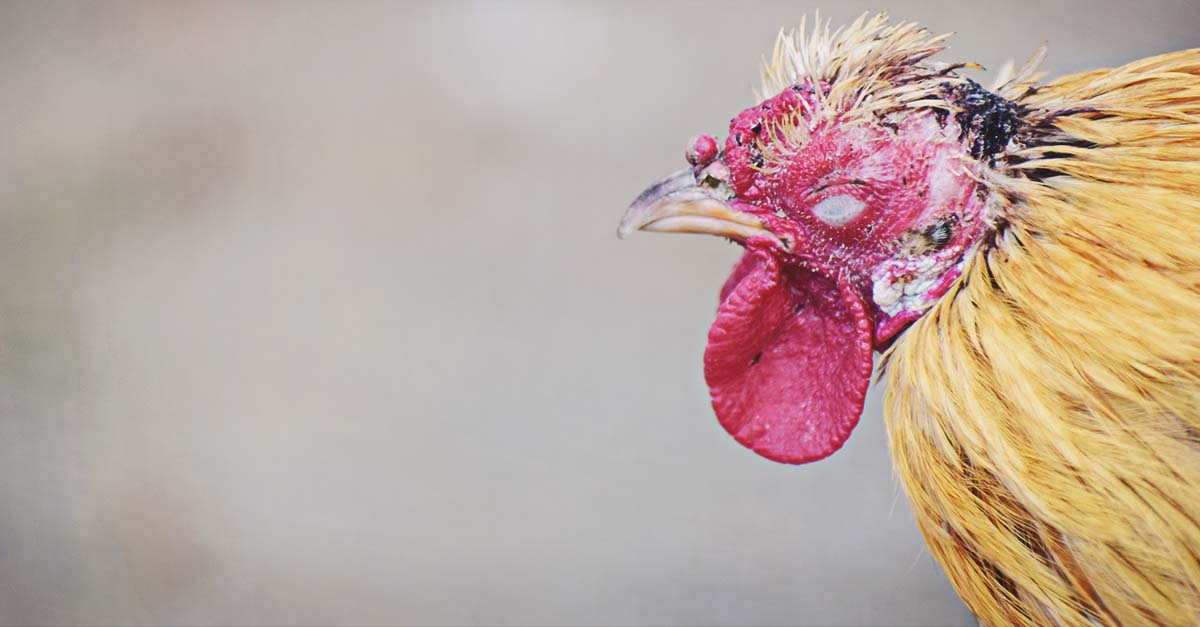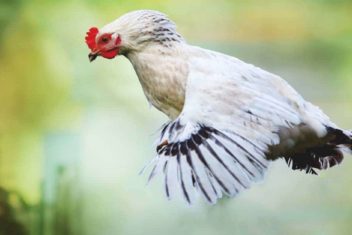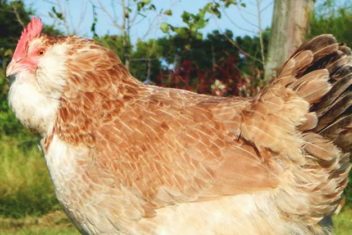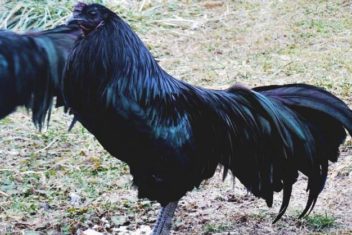Although owning chickens come with huge benefits, there are also perils. One of these is a chicken disease that is extremely contagious and deadly, called Marek’s Disease.
If you own a flock of your own or plan to start one soon, it’s vital to know the signs of Marek’s disease and how you can prevent the spread of it.
Unfortunately, Marek’s disease has no cure, and in most cases, infected birds will eventually die due to the effects of the disease.
The most important thing you can do is educate yourself about the disease and protect your current (or future) flock. Read on to learn more about this nasty chicken disease.

What is Marek’s Disease?
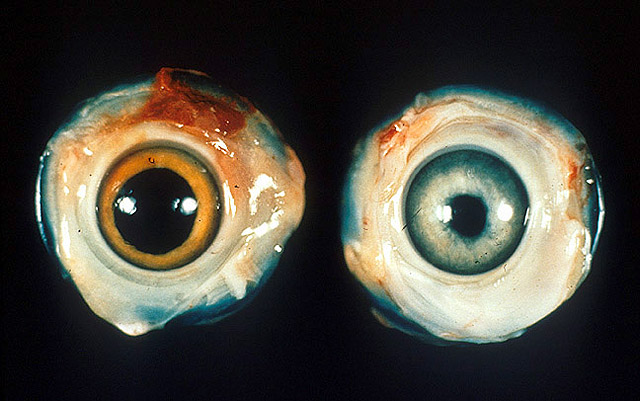
According to the Merck Veterinary Manual, “Marek’s disease is one of the most ubiquitous avian infections; it is identified in chicken flocks worldwide. Every flock, except for those maintained under strict pathogen-free conditions, is presumed to be infected.”
A useful takeaway from the Merck Manual is to try your best to be safe rather than sorry when it comes to Marek’s disease. In general, assume most flocks are infected.
Marek’s disease is a herpes virus that attacks chickens’ nervous system and causes an array of issues depending on the virus strain the chicken has contracted. In many cases, the affected chicken will become paralyzed and unable to walk or move.
The virus can also cause tumors in the heart, brain, spinal column, muscles, lungs, and other major organs. Different strains of the virus will cause chickens to go blind.
How Do Chicken’s Get Marek’s Disease?
Unfortunately, Marek’s disease is spread through one of the most frustrating and challenging to control avenues possible. It is passed from chicken to chicken through their dander, skin particles, otherwise known as “poultry dust.”
And that’s not even the worst of it, the virus can survive in the dander for months to years after it has “left” the chicken. So, if you had chickens with Marek’s, and you want to put a new flock in your old coop, you must first make use of the Marek’s Disease vaccination.
In general, the disease can be spread through the following avenues:
- From chicken to chicken by dander
- From an old infected coop to the chicken through dander left behind
- By a caretaker who has infected dander on their hands or clothes
- Even by the wind, carrying infected dander to a nearby healthy flock
- Wild birds
Symptoms of Marek’s Disease
Some chickens with Marek’s disease may simply remain a carrier, and never show signs or perish due to the condition. They can, however, pass the virus on to healthy birds.
Most infected birds die from starvation, secondary infections, or even being trampled by healthy (or stronger) flockmates. How long an infected chicken lives will depend on the chicken and the strain of the infection.
Symptoms of Marek’s Disease may include:
- Paralysis, trouble standing or using wings
- The appearance of your chicken doing the “splits.”
- Weight loss
- Vision loss
- Grey pupil with an irregular shape
- Collapsed combs
Before you assume your chicken has Marek’s disease, consult with your veterinarian to confirm the diagnosis. Often, Marek’s disease is confused with simple leg injuries preventing your chicken from walking.
Chickens with mites, lice, and worms also can become emaciated and starve to death. Their combs and wattles will become pale, and chickens become lethargic. Your vet can tell you what is ailing your chicken.
There are also times when hens may become egg bound, and have difficulty laying eggs. You might notice your hen having trouble using her legs.
So, don’t jump to conclusions right away, your chicken could be dealing with something much more treatable than Marek’s disease.
How Then is Marek’s Disease Diagnosed?
Since the symptoms may be easy to spot, it can be tempting to make the diagnosis by yourself. But please talk to your veterinarian about what you are seeing with your chickens. Your vet can get an accurate diagnosis through observing your chicken, doing a biopsy, or other lab work.
If your chicken has passed, instead of disposing of it, take it to your vet for a necropsy. As hard as it might be, it’s valuable to know what’s killing your chickens so you can prevent the spread or treat the rest of your flock–if it is something treatable.
How Best to Prevent Marek’s Disease
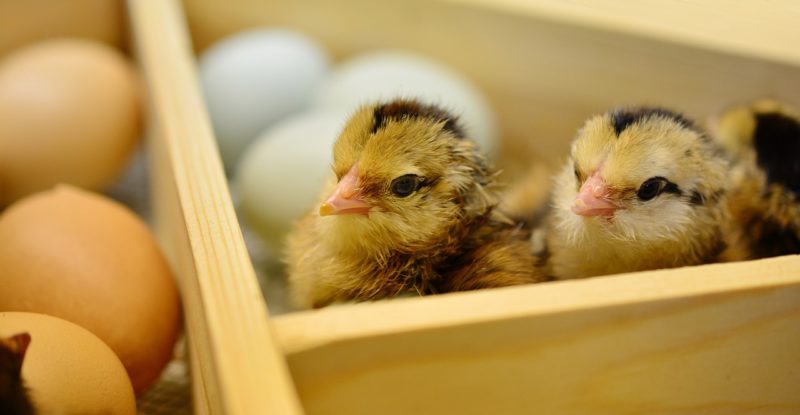
At this point, it’s worth mentioning that chicks hatch healthy, even if their hen has Marek’s disease. And as long as they don’t come in contact with the dander of infected birds, they will remain Marek’s-free.
So, if your chicken has Marek’s disease, it contracted it at some point in its life, but not while in the embryo. If you want to prevent Marek’s disease, consider the following.
1. Marek’s Disease Vaccine
While the vaccination against this disease is extremely effective, it is not always a 100% sure-fire way to prevent the disease. It should be administered to day-old chicks for best results. Waiting any longer than a day increases your chick’s chances of inadvertently contracting the disease.
2. Research Hatcheries and Breeders
Before you start your first flock or introduce new members to an existing one, you should research the hatchery or breeder you are considering. Ask them about their vaccination procedures, if the vaccine is available, and if chicks are exposed to other infected birds before being vaccinated.
It is important to note that the vaccine is not immediately effective, and can take up to 7 days to take effect. So, if you are hatching your own chicks, and vaccinating them on your own, remember to isolate the new chicks until the vaccine has had time to work.
If you order chicks online, and there’s an option to vaccinate your chicks, it is best to opt for the Marek’s disease vaccine for a small fee per chick.
3. Quarantine Your Sick Birds
If you believe one of your chickens may have Marek’s disease, you should quarantine it immediately. Although it is highly contagious, there is always a chance the rest of your flock has not contracted the virus yet.
Practice proper handwashing, and change your clothes before caring for healthy birds after you have handled sick chickens.
Marek’s disease is a vicious virus that can devastate an entire flock. While you may feel helpless if your current flock is infected, you can help break the cycle. Vaccinate chicks and keep your infected birds far from healthy, unvaccinated, chickens.
